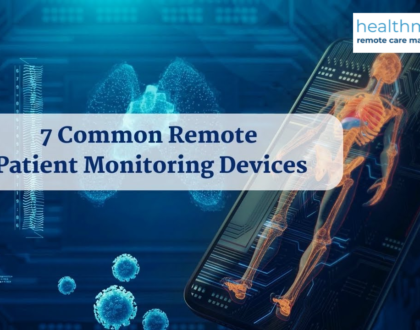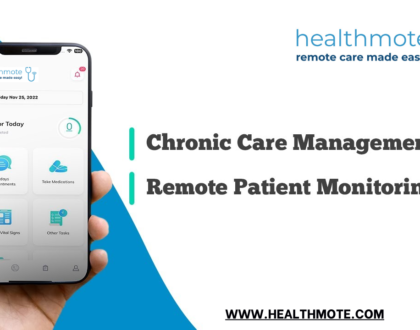
6 Remote Patient Monitoring Facts COVID-19 Taught us
Remote patient monitoring came even before the COVID 19 pandemic due to the growing demand for chronic disease management and higher post-acute care. But now, due to the pandemic, RPM technology has become the primary resource for patients and doctors. Hospitals have increasingly embraced digital healthcare technology. The advantages of RPM are manifold. Doctors are using this technology to best help high-risk patients.
The RPM is an act of monitoring the state of health of a patient without being present. The incorporation of communication technologies has provided experts with a radical solution to providing top-quality medical care from a distance.
Below Are The 6 Facts About the Remote Patient Monitoring Solutions:
-
PaceIn Remote Patient Monitoring
The concept of remote patient monitoring has evolved for a long time. There has been a steady increase in the number of users. However, COVID has changed the growth rate exponentially. Several remote monitoring solutions use new technologies that enable us to serve a large clientele. Remote patient monitoring is more than just a virtual visit to a doctor. This connected care continues and dramatically transforms healthcare.
-
Fast Adaptability Of RPM
Remote monitoring solutions evolved to meet the need for digital healthcare and patient monitoring. It became the perfect solution for post-acute care at home as well as for patients with chronic conditions. New solutions are developed to detect high-risk candidates for COVID 19, including patients in quarantine. In addition, back-to-office solutions are being developed that help companies with a large number of employees to run their operations smoothly.
-
Worthy Investment
RPM is a valuable resource for the medical industry. Not only does this minimize the hospital admission rate, but it also lowers the cost of chronic disease management. Due to the pandemic, it has become extremely profitable for suppliers. Because people were in quarantine, it was extremely dangerous for high-risk patients to go to the hospital to access telemedicine care.
-
Patient’s Concern for Remote Monitoring
Nowadays, more and more patients are interested in remote monitoring as several people have seen the benefits. It is possible to remotely monitor heart rate, blood pressure, oxygen levels, and blood sugar so that patients are ready to have someone remotely monitor their health.
-
Building Community
Remote monitoring does not replace human interaction, it is a complement to real interactions, it is used as a tool to help people with pain or depression by giving them access to virtual counseling sessions.
-
RPM Will Grow
Remote monitoring solutions are expected to grow in the coming years at a rate of around 15% or more due to rapid advancements in technology. Things change quickly and factors like machine learning, artificial intelligence, IoMT, etc. are ready to bring remote monitoring solutions to the forefront.
So those were some of the aspects of remote patient monitoring. And telemedicine is here to transform the current healthcare system. With more and more new technological advancements, things are rapidly changing for the better. While in-person surveillance will always be present, RPM telemedicine is sure to take the industry by storm. Remote monitoring plans not only ensure continuous and unrelenting health care but also provide quality health advice without any issues or situations.
About Healthmote
Healthmote is an easy-to-use integrated platform that lets providers tap into a slew of Medicare programs like Telemedicine Solutions, Video visits, Remote Patient Monitoring (RPM), Chronic Care Management (CCM), and more. We have built the system with one thing in mind: SIMPLICITY. We have worked with hundreds of providers and understand deeply that providers, their staff, and their patients do not have time for complex solutions.

 Linkedin
Linkedin

